This guide examines the resilience, appearance, and technical elements of traditional double glazing. It combines time-honored techniques with contemporary efficiency. We analyze crucial material selections, comparing toughened and standard glass, along with thermal spacer options. The discussion covers sealing approaches, including dual-layer versus single-layer methods, and energy-conserving elements such as Low-E films that enhance insulation. Special attention is given to GLASVUE’s distinctive offerings, featuring crystal-clear low-iron glass for restoration work and sound-dampening laminated glass for urban environments. Their rigorous quality standards and adaptable solutions address both visual and functional demands. Professional advice covers product selection for various weather conditions, accurate fitting procedures, and upkeep routines to maintain performance while protecting a structure’s architectural character across restoration and new construction projects.
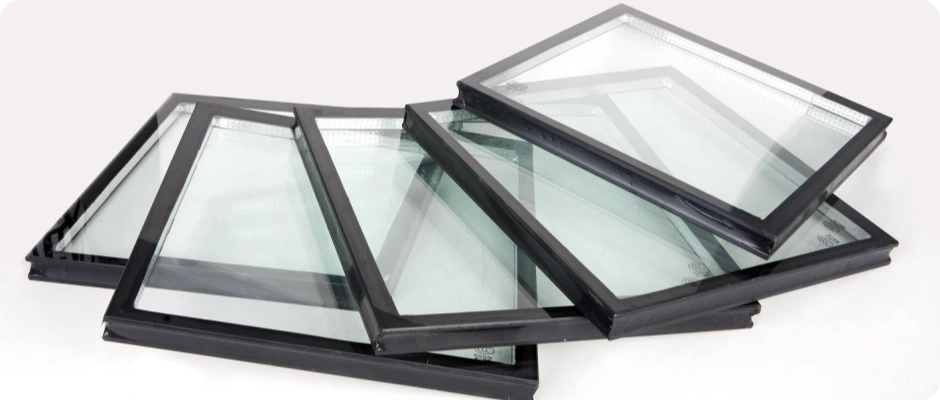
What Gives Legacy Double Glazing Its Unique Appeal?
Distinctive Qualities of Traditional Double Glazing
Legacy double glazing consists of two glass panes separated by a spacer, creating an insulating air gap that reduces heat transfer and enhances energy efficiency. Its cost-effectiveness and relatively simple manufacturing process make it an ideal choice for improving thermal insulation and soundproofing in various settings.
How Do Material Choices Affect Long-Term Performance?
Selecting appropriate components is vital for the sturdiness and lasting effectiveness of traditional double glazing. The glass variety, spacing materials, adhesives, and framework all influence resistance to damage, environmental factors, and energy preservation.
Float Glass Versus Tempered Glass
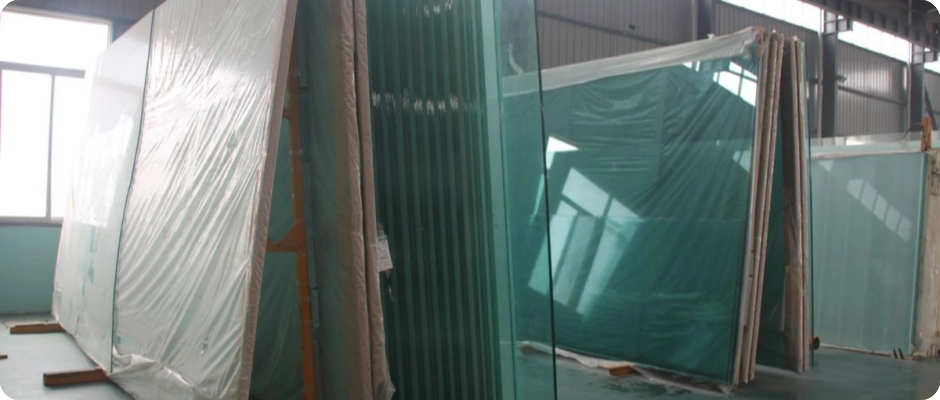
Float glass offers transparency for general applications. Tempered glass provides superior strength and security. It withstands impact five times better than conventional glass, making it suitable for vulnerable areas or high-security locations.
Automatically Bent Aluminium Spacer Versus Straight-Cut Aluminium Spacer with Corner Keys
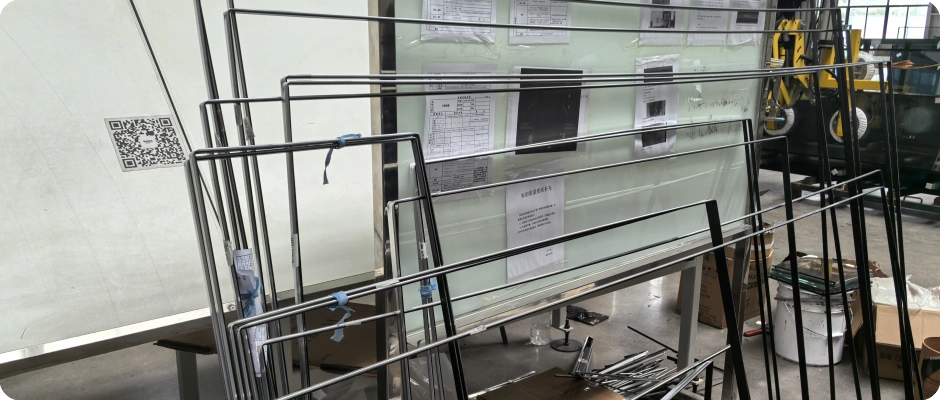
Automatically bent aluminium spacers offer superior airtightness and stability compared to straight-cut aluminium spacers with corner keys. Their continuous, jointless design minimizes leakage risks at connection points and better withstands thermal expansion and contraction, ensuring enhanced long-term performance reliability for insulated glass units (IGUs).Single-Seal System Versus Dual-Seal System
The dual-seal system provides enhanced defense against moisture penetration compared to the single-seal system. This additional safeguard extends product life in demanding environments.
Silicone Structural Sealant Versus Polysulfide Sealant
![]()
Silicone Structural Sealant maintains elasticity across temperature fluctuations. Polysulfide Sealant compounds deteriorate quickly under severe conditions. Silicone Structural Sealant delivers superior lasting performance.
Aluminium Spacer Versus Warm-Edge Spacer
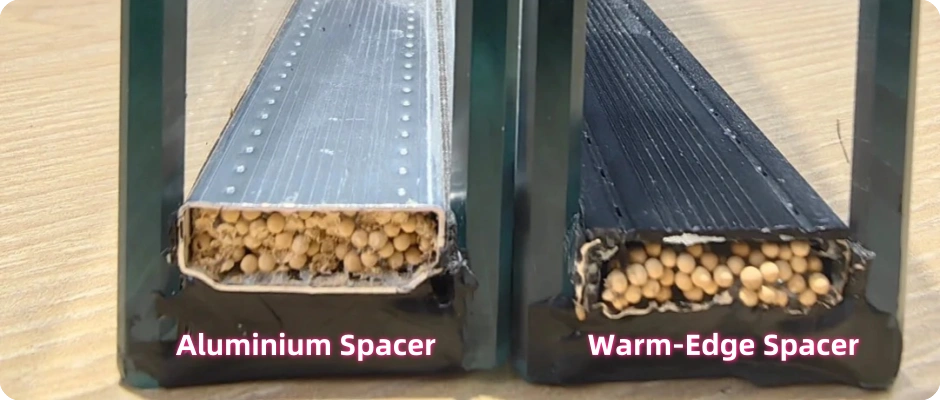
Warm-edge spacers, made from low-conductivity materials, significantly improve edge insulation, reducing heat loss compared to traditional aluminum spacers.
Machine-Applied Adhesives and Protective Layer Removal Versus Hand Techniques
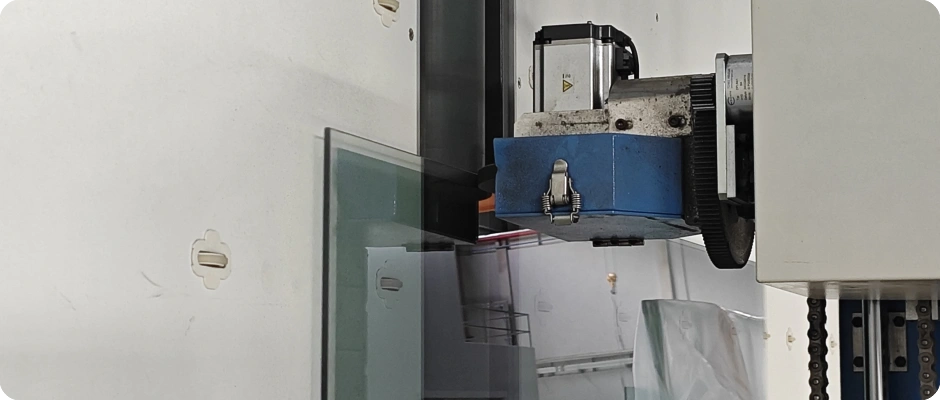
Automated adhesive application and film removal ensure accuracy and uniformity. They decrease errors relative to manual processes, guaranteeing premium results and improved functionality.
How Does Traditional Double Glazing Compare to Contemporary Options?
Modern systems incorporate innovations like Low-E films and triple-pane insulation for greater energy preservation. Traditional versions prioritize classic aesthetics while employing durable materials such as safety laminates or hardened glass. This combination provides both historical charm and practical benefits, ideal for projects valuing heritage and performance.
Evaluating Glass Options and Energy-Efficient Features
Modern insulated glass units (IGUs) tend to incorporate Low-E coatings because they effectively reflect infrared radiation, reducing solar heat gain and easing the cooling load on air conditioning systems. In winter, Low-E coatings also reflect far-infrared radiation emitted from indoor objects back into the room, helping retain warmth and improve energy efficiency.
What Elements Ensure Extended Service Life?
Glass Standards and Dimensions
Using glass that is too thick, too thin, or oversized can compromise the lifespan of double glazing. Overly thick glass increases weight and stress on seals, while excessively thin glass may lack structural integrity. Oversized panes can lead to deflection or seal failure. Properly sized, high-quality glass ensures durability and performance.
Framework Materials and Their Effect on Durability
Automatically bent aluminum spacers enhance sealing integrity, reducing air and moisture infiltration. This improves the longevity of IGUs by maintaining the insulating air gap and preventing degradation.
Care Routines for Sustained Effectiveness
Frequent gentle cleaning stops grime from harming seals or surface treatments. Periodic examinations detect problems like pane condensation or failing seals promptly. These basic measures preserve traditional double glazing in optimal condition.
How Does Design Affect Traditional Double Glazing?
Visual Harmony in Building Contexts
Legacy double glazing complements both historic and modern architecture by combining authentic aesthetics with contemporary performance. Insulated glass units can be constructed using a combination of coloured glazed glass, heat-reflective glass, Low-E glass, tinted glass, and digitally printed glass. This allows designers to achieve their visual design goals while also meeting thermal insulation and acoustic performance requirements.
For example, coloured glazed glass adds vibrant colour and rich pattern options to curtain wall façades.
Adaptable Choices for Various Uses
Customization makes traditional double glazing flexible. Specific designs, hues, or treatments can match special project requirements. Whether sound-absorbing glass for quiet spaces or energy-saving alternatives, personalized answers enhance both attractiveness and utility. This versatility serves diverse structures, from antique residences to contemporary workplaces.
GLASVUE’s Superior Offerings for Traditional Double Glazing
GLASVUE provides specialized products, including crystal-clear low-iron insulating glass for unobstructed views, laminated Insulated Glass designed for High-Rise Commercial Buildings. Their innovative solutions, like multi-pane insulated glass and noise-reducing laminates, concentrate on energy economy and sound management. GLASVUE excels through bespoke products, exacting quality protocols, and pioneering methods. These guarantee both aesthetic value and enduring functionality for different architectural endeavors.
GLASVUE’s Cutting-Edge Solutions
Product Selection for Historic and Contemporary Buildings
Material selection is fundamental for traditional glazing projects. With thirty years’ expertise, GLASVUE supplies numerous glass types for both aged and modern constructions. Their double glazing solution is common in business environments, while crystal-clear low-iron glass removes standard glass’s bluish cast, providing perfect clarity. This suits projects demanding both toughness and elegance.
For restoration work, GLASVUE’s high-definition glass optimizes daylight without sacrificing energy savings. This is crucial for maintaining a building’s authentic appearance. Their frosted jade glass ensures privacy while transmitting light, perfect for contemporary dividers or bathroom screens. These items successfully balance practicality and design.
Modern Techniques Boosting Performance and Longevity
Traditional double glazing gains from progressive technologies that enhance operation. GLASVUE’s high-efficiency dual-pane insulated glass delivers outstanding thermal protection. It maintains pleasant indoor conditions in regions with extreme weather variations. Their triple-pane insulated glass outperforms conventional dual-pane units by five times, making it prime for energy-conscious developments.
GLASVUE’s sound-control range utilizes specialized laminated glass to filter high-pitch noises. This gives exceptional acoustic insulation without bulky materials. It’s excellent for metropolitan locations where noise pollution exists. Low-E films additionally improve energy savings by deflecting infrared heat while transmitting visible light, ensuring coziness and cost savings.
GLASVUE’s Market Differentiation
GLASVUE provides comprehensive answers for technical and aesthetic difficulties. Their customizable range allows experts to adapt products to any architectural theme. Their stringent quality checks, like minimizing spontaneous breakage during manufacturing, confirm safety and dependability. This establishes GLASVUE as a reliable option for traditional glazing assignments.
Guidance for Professionals Implementing GLASVUE’s Traditional Double Glazing
Aligning Products with Architectural Themes
Match glass to the building’s style: crystal-clear low-iron glass for modern designs, colored glazed or frosted glass for historic or privacy-focused projects, and laminated glass for safety in commercial settings.
Considering Weather and Environmental Factors
Hot, Sunny Climates (e.g., Middle East, Southeast Asia): Use heat-reflective double glazing or argon-filled IGUs to reduce heat conduction.
Cold Climates (e.g., Northeast China, Tibet, Northern Europe): Combine Low-E glass with argon-filled IGUs for enhanced insulation.
Optimal Fitting Methods for Best Outcomes
Correct installation guarantees that traditional double glazing functions effectively long term. Machine-applied sealants minimize mistakes and reinforce bonds. Two-stage sealing gives better moisture resistance than single-stage techniques, increasing resilience in severe climates. Regular maintenance, like delicate cleaning and problem detection, keeps the system performing well. These methods optimize both utility and visual appeal.
FAQ
Q1: Why does triple-pane insulated glass outperform standard double glazing?
A: Triple-pane versions offer fivefold greater insulation. They conserve more energy and ensure occupant comfort.
Q2: How does safety laminate glass improve building security?
A: Safety laminates reduce harm from collisions. They’re perfect for business areas or vulnerable locations.



